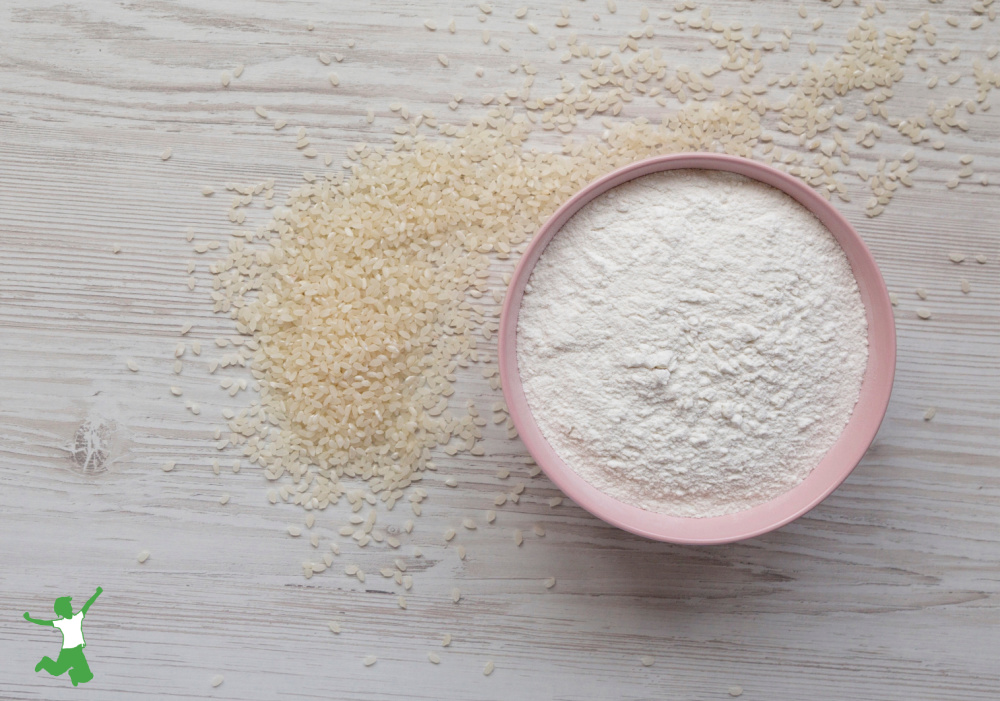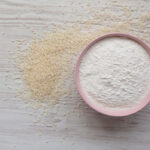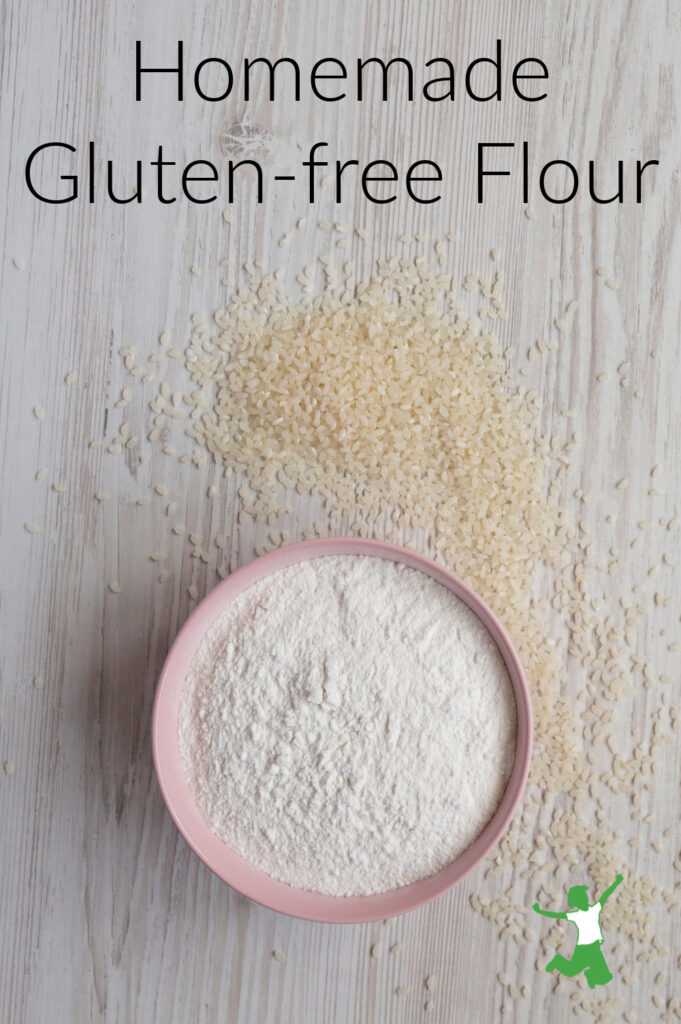Table of Contents[Hide][Show]
A simple recipe for homemade gluten-free flour that is sprouted for extra nutrition and free of additives and binding gums like xanthan.

My recipe for gluten-free blondies generated a number of emails from people who wanted to know how I mixed the flour.
I’ve put out guidelines on blending gluten-free flour at home in years past. There are so many ways to do it!
However, I have never posted my actual go-to recipe that I can recall.
Why would you want to blend gluten-free flour yourself?
Perhaps the most important reason is because pre-blended gluten-free flour on the market contains xanthan gum or some similar substance.
These additives can create gastric distress for some people. Ironically, it is usually the very same people who are eating gluten-free in the first place!
Secondly, buying premade flour is virtually nutritionless and can actually be a bit rancid.
For the best-tasting homemade gluten-free baked goods, you really need to take the few minutes necessary to grind the grains and blend them yourself.
Flour Blending Tip
I tend to blend bigger batches and freeze the gluten-free flour in double-bagged freezer ziplock bags.
This preserves freshness and nutrients for months!
You can even use this flour straight out of the freezer! No thawing is needed, and freezing flour does not clump it at all!
Give my gluten-free flour blend a try and see what you think!

Sprouted Gluten-free Flour Blend
A simple recipe for homemade gluten-free flour that is sprouted for extra nutrition and free of additives and binding gums like xanthan.
Ingredients
- 1 pound sprouted oats
- 1 pound sprouted brown rice
- 1 pound sprouted sorghum
- 1 pound sprouted buckwheat optional
Instructions
-
Grind the sprouted whole grains in a grain grinder.
-
Blend all the types of gluten free flour together in a large mixing bowl.
-
Double bag the sprouted flour blend in a gallon-sized freezer ziplocks.
-
Store in the freezer to preserve freshness and nutrients. You can use the flour straight out of the freezer in your favorite recipes with no thawing necessary.









If I do not use xanthan gum in your regular gluten free flour blend I was thinking of mixing in Perfect Supplements gelatin.
I don’t think that would work. Gelatin has to be dissolved in water to become active and it only gels liquids.
For your. recipe that contains xanthan gum would it be ok to leave it out if one does not mind texture? I feel that I would be ok not adding it but am curious if it is recommended to leave it out if one desires.Thanks!
There is no xanthan gum in this recipe, so not sure what you are asking.
I meant the gluten free flour blend that does contain xanthan gum that you posted with the white rice as the. base.
You can leave it out, but gluten free flour typically needs a binder for the dish to hold together well, particularly breads.
Seeing that microplastics are such a big problem (oxymoron not intended, lol), would you recommend storing the flour mix in silicone bags instead of plastic zip-bag? I’m anxious to try your flour blend. But since I don’t have a grain mill, I’ll start by getting those sprouted grains already ground. What I can’t find locally I’ll order online.
Also, Have you looked into if your grain source tests for heavy metals? I read that cassava, arrowroot and brown rice can have unsafe levels of cadmium and arsenic.
Silicone bags would be fine. Silicone is synthetic rubber and hormone disrupting the same as plastic, but cold use is safe.
The grains sources I use are organic and from reputable small businesses that source within the US, so I feel comfortable using them.
Hi Sarah,
I have more questions! I have been experimenting with all of those flours you listed above. I don’t digest brown rice flour or oat flour well…..just curious of other combinations of flours? Millet, Cassava and Amaranth seem like I can digest them well. I tried subbing them in for your Gluten Free Flour Recipe (you listed 3/4 cup of rice flour, and I need to avoid that one so I tried using half Millet and half Cassava flour which made decent pancakes but super gummy horrible crackers lol. Anyways, I would love yyour suggestions for these three flours if at all possible with the amounts you would try and if I could avoid Xantham Gum? I know the recipe you had called for a 1/2 tsp of Xantham Gum, 1 T of Tapioca, 3 T of Arrowroot starch and then 3/4 cup of rice flour……Curious your thoughts! I feel like I am doing a science experiment in my kitchen all the time!!
Thanks so much!
Hi Sarah,
Is there anyway I could sub out the Oat flour for another Gluten Free flour?
Also, can you grind up the flour grains in a Ninja blender or does it have to be specifically a grain blender?
Yes you can. I’ve can sub out the optional amaranth flour for the oat flour. It changes the flavor a bit, but it is quite nice in my opinion.
I don’t have a Ninja blender, so cannot comment on the effectiveness of using this appliance instead of a grain grinder. If you try it, please let us know how it turns out!
Can this recipe be used as an equal exchange for regular flour in baking and cooking recipes?
You will have to experiment and see. I’ve exchanged one for one in recipes and had it work fine, and other times, I’ve needed to adjust to a bit more.
Thanks Sarah! This recipe and tips are extremely helpful!
What is the serving amount in the nutrition facts?
Each serving is 1/4 cup.
Would you have any suggestions as to a good grinder. I have a Bosch universal mixer.
Thanks.
I am not in the market for one, so haven’t vetted any brands lately. However, if I was going to buy one, it would be a stone grain mill like Komo.
Good morning. What type of grain grinder do you use? I want to add a grinder to my arsenal. Thank you,
Beth jelks
I use the grain grinding attachment for a 30 year old Champion juicer. Works great! Don’t even sell them anymore, I don’t think.